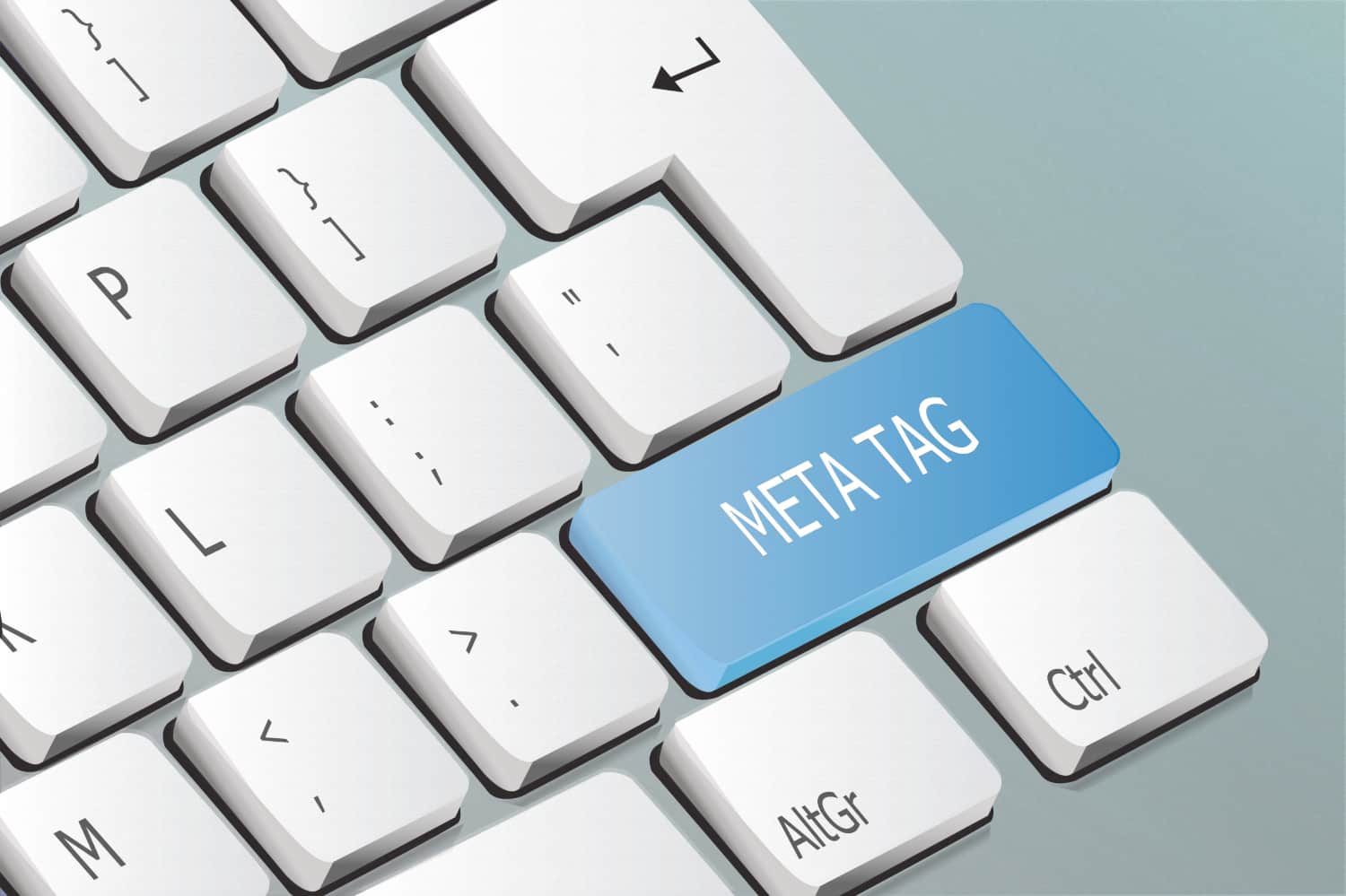Title Tags
Believe it or not, Title Tags are one of the most important elements of an optimized website. They tell search engines what your page content is about which helps them deliver the information the searcher is looking for. Title Tags should be both unique and keyword-focused. Do not, however, give in to the temptation to keyword “stuff” your Title Tags; Google can tell when you do that and may even punish you for trying to game their system. It is strongly recommended that you keep your Title Tag under 66 characters. You will know if it’s too long because it will end with an ellipsis (…) indicating not all the text is appearing.
It’s not hard to write Title Tags but it can be time-consuming. You want to write a unique, descriptive Title Tag for each page of your website.
Meta Description
A Search Engine Results Page (SERP) is presented to a viewer when they do a search on Google. Each company listed on the SERP has three components a Title Tag, the website URL, and a Meta Description.
The Meta Description is about 180 characters used to describe what information the visitor can expect to see on the specific website page listed on the SERP.
The best way to use the Meta Description is to think of it as an ad because there can be up to fourteen search results to choose from. The Meta Description copy gives you the opportunity to differentiate your Meta Description from the competing search results and speak directly to the searcher. The goal is to get the searcher to click on your website.
The Meta Description is not a Google Ranking Factor, but a Click-Thru-Rate is, so give thoughtful consideration to the Meta Description copy and Title Tag keywords to speak directly to your ideal customer’s search intent.
Alt Tags
Alt Tags are the Meta Descriptions used to describe the images used on your website. It should summarize the purpose of the image. The Alt Tag text which describes an important photo (i.e. a product) makes it possible for the search engine to find it, interpret the meaning or content of the photo, and index it. Strictly decorative photos do not need Alt Tags.
How many characters are allowed in an Alt Tag
Technically speaking there is no limitation. As a practical matter, best practice is to be between 100 and 125 characters. If accessibility is the goal, the recommendation is 100 characters. Google will count about 15 words which are roughly equivalent to about 125 characters.
Alt Tags aid the Search Engine
- Can contain keywords related to your product or service
- Provide another place to describe your product or service
- Provide a unique description of the photo or image
Alt tags are becoming increasingly important as more people demand accessibility For the visually impaired, an Alt Tag assists with website accessibility when connected to screen readers.
Sitemap
Simply put, a sitemap is a list of pages on your website and how that content is organized. It is a list available to both search engine crawlers and website visitors. A sitemap can be used as a development planning tool for web design. Usually, the website pages are organized hierarchically. This helps visitors and search engine bots (crawlers) find specific pages on the website. Think of a sitemap as a Table of Contents for the website pages.
There are two types of sitemaps. There is the visual one that is created before building a website – the planning tool also known as a WireFrame Drawing. The most important kind of sitemap, however, is the XML sitemap which is a list of the pages, videos, and other files and how they are related on the website that the search engines can interpret.
“An XML sitemap is a file where you can list the web pages of your website to tell Google and other search engines about the organization of your site content. Search engine web crawlers like Googlebot read this file to more intelligently crawl your website.” Some more information about sitemaps from Slickplan.
The sitemap not only tells the search engines that pages exist but also what’s on the pages, for instance rich media like images, video or audio.
You can help Google know that you have an XML sitemap through the Google Search Console. Submitting it alerts Google that the website exists and is ready for Google or other search engine bots to crawl and index the website.
The other sitemap is the one that is usually displayed in the footer which lists the pages on your website to help the visitor understand how the website is organized.
Indexing
This is rather technical, but an important step because it is search engine indexing that allows the keywords on your website pages to be found and your website to appear in a web search. In simple terms, indexing is a process used by search engine crawlers (BOTS) to read the content on your website and store the content with keywords found in their proprietary database. This is the way keywords are used to find particular pages on your site when it is searched by an end-user.
Depending on the meta tag you use (Index or Noindex), Google will crawl and index your pages. A Noindexed tag tells Google you don’t think the page is important and not to index the page. On the other hand, if the meta tag you use is indexed, that signals the search engine that the page is important and it will automatically be indexed (stored in the search engine’s database). Many search engines, such as Google, Bing, Yahoo, etc., are continuously visiting (crawling) webpages and compiling keywords to include in a database (index). The index maps keywords to pages for easier data retrieval when someone is searching the web.
Here is an example: When you search for “Marketing Agencies Near Me” you get a Search Engine Results Page (SERP) that looks like this.
The Noindex concept is important because you can eliminate pages from the search engine index that you know are not important or have little or no value in getting leads for your business. Some examples of low-value pages might be Landing pages related to ads, a Privacy Policy page, a Price List page, an Employment page, a Donate page, etc.
To sum up, SEO is important to your website’s ranking. Much is involved in getting it right by optimizing copy.

